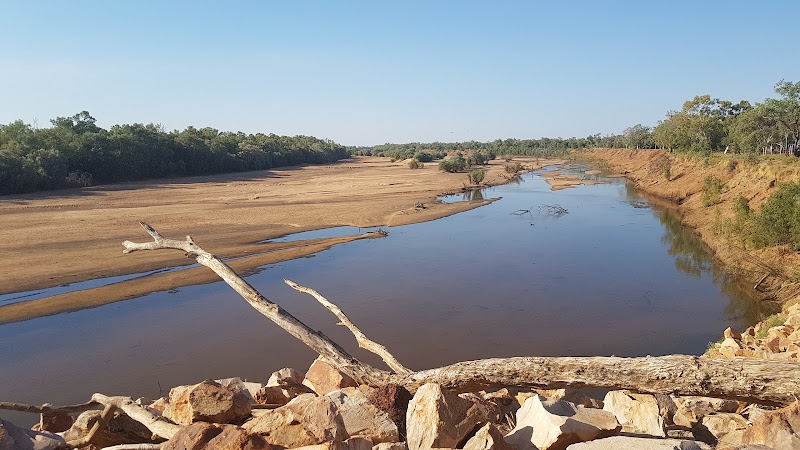
Racing the Tide: Experiencing the Broome Races in Western Australia
Broome Races offer a one-of-a-kind coastal horse racing experience set against the waves of Western Australia's Indian Ocean. This annual event blends sport, culture, and nature, inviting visitors to engage with an exhilarating day where horses, sea breeze, and sand create an unforgettable adventure.
Stay Hydrated Under the Kimberley Sun
The event unfolds under a strong sun with limited shade. Carry sufficient water and wear a wide-brimmed hat to avoid heat exhaustion.
Footwear for Sand and Turf
Sandy surfaces can shift underfoot. Opt for sturdy, sand-resistant shoes or boots with good grip to navigate the venue safely.
Arrive Early for Best Viewing
The racecourse can become crowded. Early arrival ensures good sightlines and convenient parking, enhancing your overall experience.
Bring Cash for Local Vendors
Though some vendors accept cards, smaller food stalls and betting booths often operate cash-only, so have Australian dollars on hand.
Racing the Tide: Experiencing the Broome Races in Western Australia
Broome Races capture the spirit of Western Australia's Kimberley coast with an energy that pulses as fiercely as the incoming tide. This unique horse racing event, held annually in Broome, transforms the town into a hub of excitement and cultural celebration, where tradition rides alongside adrenaline.
Set against the panoramic backdrop of the Indian Ocean, the Broome Races are more than just a sporting occasion. The iconic Turf Club sits close enough to the shoreline for the sea breeze to challenge spectators, as waves push forward like nature’s own trackside spectators. The sandy racecourse—uncommon in Australia—presents a distinct terrain where horses and riders manage footing that is at once yielding and firm, demanding acute skill and balance.
For visitors, the races offer a full day experience. Expect a well-paced program with events starting mid-morning through late afternoon, making it essential to plan for hydration and sun protection. The track sits at sea level, so no steep climbs or technical trails interfere, but the open expanse demands endurance against the coastal heat and wind.
The atmosphere pulsates with a mix of casual camaraderie and intense competition. Locals and tourists mingle, adorned in relaxed yet smart attire suited to the tropical climate—think breathable fabrics and sturdy footwear for sandy ground. Food trucks and stalls ring the venue, offering local seafood and beverages to keep energy up and spirits high.
Timing your visit during the dry season (May to October) maximizes comfort—temperatures are milder and rain is scarce, reducing the chance of race cancellations or muddy tracks. The wet season introduces humidity and sporadic downpours, which can turn the course into a slick challenge but also deepen the colors of the surrounding landscape.
Parking and access are straightforward; the club provides clear signage and ample space, but early arrival is recommended to secure the best spots. For those new to horse racing, engaging with the friendly racegoers or the knowledgeable staff adds a rich layer of insight into betting strategies, the history of the races, and the breeding of local thoroughbreds.
Broome Races demand respect—both for the horses navigating the sand and the natural elements that shape the event. The ocean’s presence isn’t just a scenic claim; it seeps into the experience, turning the entire race into a dialogue between human ambition and nature’s persistent edge. Whether you’re an avid race fan or simply looking to immerse yourself in a remarkable Western Australian tradition, this event delivers a day where adventure meets practical planning and coastal flair.
Nearby Trips
All Adventures
Boat Charters
Water Activities
Adventures near Broome, Western Australia
Discover the unique and memorable adventures that make Broome, Western Australia special.
Frequently Asked Questions
When is the Broome Races event usually held?
Broome Races typically take place annually in mid-October, aligning with the dry season when weather conditions are most favorable for outdoor events.
Are there seating arrangements or should I bring my own?
The Turf Club provides some seating areas and shade structures, but many visitors bring portable chairs or picnic blankets for personal comfort.
Is betting allowed for newcomers and tourists?
Yes, betting is open to all attendees. Beginners can seek guidance from racecourse staff or fellow racegoers who are often welcoming and helpful.
What wildlife might I encounter during the event?
Various shorebirds, like pelicans and sea eagles, frequent the nearby coast, with occasional dolphins spotted offshore, adding a wildlife dimension to the day.
Are there restrictions on what visitors can bring to the event?
Standard outdoor event rules apply; no glass containers or outside alcohol are permitted. Check the official event website beforehand for updated policies.
How accessible is the Broome Races venue for visitors with mobility issues?
The racecourse is flat and largely open, with some parking close to viewing areas, but it’s best to contact the Turf Club directly to discuss specific accessibility needs.
Recommended Gear
Wide-Brimmed Hat
Protects from direct sun exposure during lengthy outdoor watching.
Sunscreen
Water-resistant sunscreen helps prevent sunburn under the harsh Kimberley sun.
Sturdy Sand-Resistant Footwear
Ensures safety and comfort on the sandy, occasionally uneven terrace around the racecourse.
Reusable Water Bottle
Staying hydrated is crucial, especially during warmer months and extended event hours.
Local Insights
Hidden Gems
- "The northwestern corner viewing platform offers a quieter spot with expansive ocean views and fewer crowds."
- "Nearby Gantheaume Point is accessible for a post-race walk, revealing dinosaur footprints at low tide."
Wildlife
- "Watch for swift black kites circling overhead, constantly scanning the racecourse."
- "The waters just offshore often attract pods of bottlenose dolphins that play with the ocean’s currents."
History
"Broome Races date back over a century, originally linking pastoral traditions with local Indigenous cultures and evolving into a major social event that highlights Kimberley's heritage."
